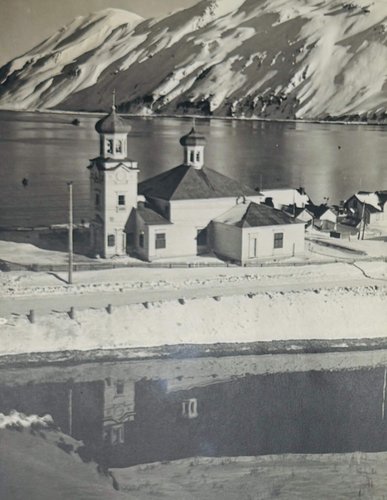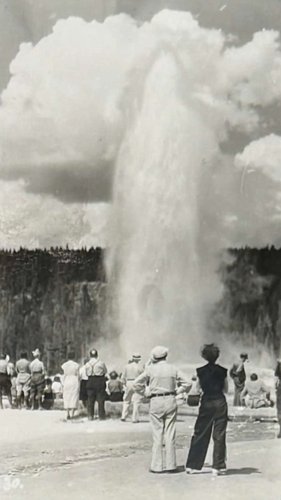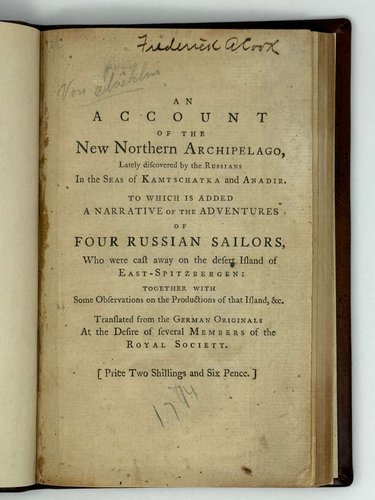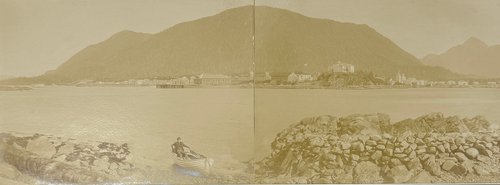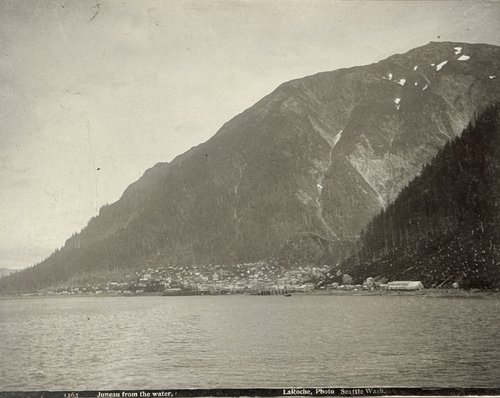






#M14
1893
1) Kodiak, Kodiak Island, 25 August 1893. Quarto (ca. 25x19 cm or 9 ¾ x 7 ½ in). 6 pp. Brown ink on lined paper. 2) Karluk, 28 September 1893. Octavo (ca. 20,5x12,5 cm or 8x5 in). 3 pp. Black ink on lined paper. Fold marks, minor holes from a pin fastening the leaves in the left upper corners, otherwise very good letters.
Collection of two historically significant original letters with a detailed first-hand account of the experiences of an early gold miner on Kodiak Island. The author, Albert Lascy, was a native of Berlin, Prussia, who arrived in the United States in 1850. Various official records list him as a miner (US Federal Census 1880) or government surveyor (US Federal Census 1910). These letters addressed to a California politician Colonel Burns, who apparently either owned the mines or was interested in them, reveal Lascy’s profound knowledge in mining. The letters describe in detail the structure and contents of the mines, applied mining procedures, as well as the weather, working conditions, and complete absence of land communications on the Kodiak. Lascy also discusses difficulties with sending mail and leaving the island, mentions the Alaska Canneries Association and its bark “Thayer,” other mail ships, the latest gold discoveries in Alaska, etc. Overall a very rare fine source of the history of Kodiak Island gold mining.
The recipient of the letters was Colonel Daniel Monroe Burns (1845-1927), California ’49-er and later the last surviving member of the Society of Sacramento Pioneers. A Civil War veteran and a Republican Politician, Burns served two terms as the Yolo County Clerk in the 1870s (with controversies on spending the budget on private purposes), was Californian Secretary of State in the 1880s, unsuccessfully tried to run for the US Senate in the 1890s and was listed as the Inspector General of the National Guard of California in 1891. Burns owned several gold mines (including the Candelaria mine in Mexico) and was an avid supporter of horse racing (Last Pioneer of Local Society is Here on Holiday: Colonel Daniel Burns Tells of Experiences as a Child in Sacramento in ‘49// The Sacramento Bee (Sacramento, California), 10 September 1926, p. 19; Col. Burns, ’49-er, to be buried today// The San Francisco Examiner, 1 June 1927, p. 12).
Excerpts from the letters:
August 25, 1893: “We have kept on prospecting the mine till the middle of July, when our powder gave out. During this time, we have sunk a shaft 25 feet deep, another one further on about 15 feet deep, and commenced a tunnel on the face of the lode at high water mark. The ore obtained in those places is of the same nature showing perhaps more free gold in some places than others. The lode in the bottom of the shaft 25 feet deep shows the most free gold. The ore carries a heavy percentage of galena, autimonial and copper sulphurets <…> we started at the lowest point obtainable at high water mark on the sea shore. Here we found a solid streak of galena and autimony near the foot wall from 8 to 10 inches wide <…> The country rock is blueish stale, very similar to the slate at Angels Camp and on the Stanislaus, the stratas nearest the vein containing also a great many sulphurets resembling the auriferous slate found in California. <…>
During July and the forepart of August we prospected the country for a distance of several miles. We found another lode about 300 yards from the one we worked <…> The ore is very much of the same nature as the ore of the other lode, the rotten quartz showing however more free gold in panning than the first lode. <…>
Hearing that a steamer was going to leave shortly Kodiak for San Francisco, we went to Kodiak on the steamer “Royal.” Arriving here we found no steamer and there will be no ship leaving here before November. We therefore shall return to Karluck and leave Karluck for San Francisco on the first ship which will leave there probably about the 1st of October. I have considerable rock sacked at the mine which I wish to ship to San Fr. The difficulty to overcome will be to get it to Karluck on board of one of the Cannery ships. <…>
We have had an extraordinary wet summer. It rained nearly every day, but all of us kept very well in spite of exposure. The past winter had been very mild, the thermometer not going below zero. We had eggs, fish and game in abundance. Mosquitoes were the greatest trouble. A mine can be worked here the whole year without any trouble as far as climate is concerned, all that is needed is a comfortable house for the men. Cotton wood and birch timber is abundant.
We extended the range of our prospecting across the country and Uyak Bay to Uyanuk [Uganik?] Bay, following the blue slate. On an island in Uyanuk Bay we found and located a lode prospecting rich in free gold, but this place was below high water mark and we only could get at it at low water. <…> There is no doubt in my mind that there exist rich gold and silver bearing lead the whole length of this belt of slate ranging N. Easterly through the Island towards Cooks Inlet. There are no roads or pack animals in this country, the interior is entirely unknown, the only means of communication is by water and one must have a boat of some sort and understand how to sail it. <…>
There has been quiet a little mining <…?> in Alaska. Some very good placer mines having been found in Cooks Inlet and Middleton Island near Copper River, also a very good article of bituminous coal at Lignik [?] Bay…”
September 28, 1893: “Dear Sir, No ship leaving Kodiak till the latter part of October or November, if then. I returned to the mine and thence to Karluck. I was in hopes to forward this letter by the mail boat from Onalaska, but she passed by last night, the sea breaking too badly to allow a landing. She may have seeked shelter last night in Uyak Bay and return here today for the mail, if so I shall forward this letter by her, otherwise by the bark “Thayer.” This bark is chartered by the Alaska Canneries Association and may leave here in a day or two. She is a small bark and will carry besides her cargo nearly 300 employees of the Association – Chinese and fisherman. There was absolutely no room for us on the bark. I have engaged passage for us on the “Margarette,” a large bark which will leave here on or about the 5th of October, weather permitting <…> I have removed all tools and other material and as much rock as I could carry in an open boat from the mine here to Karluk. The tools are in the store house of the Association. The rock I shall bring down with me…”.







